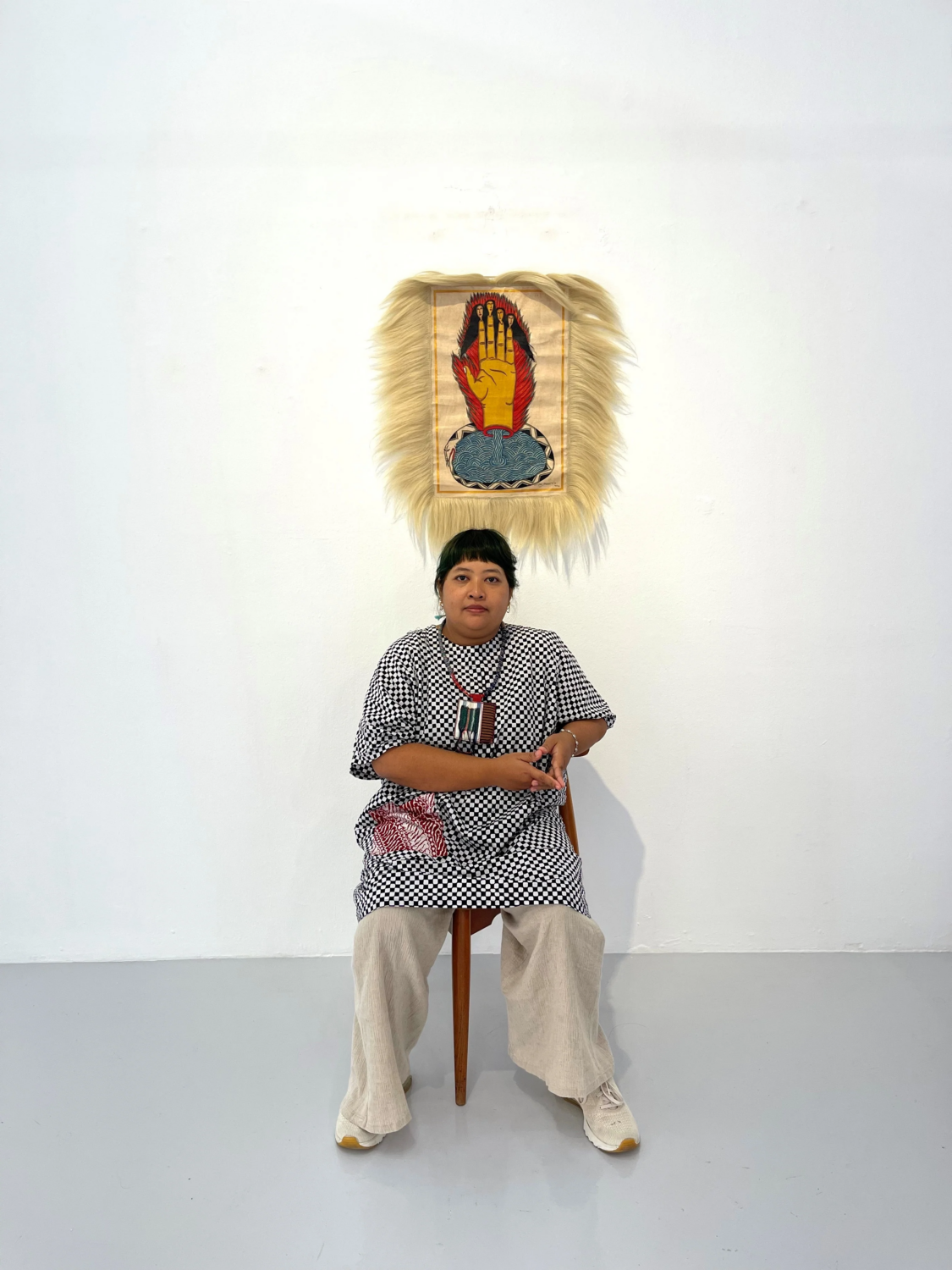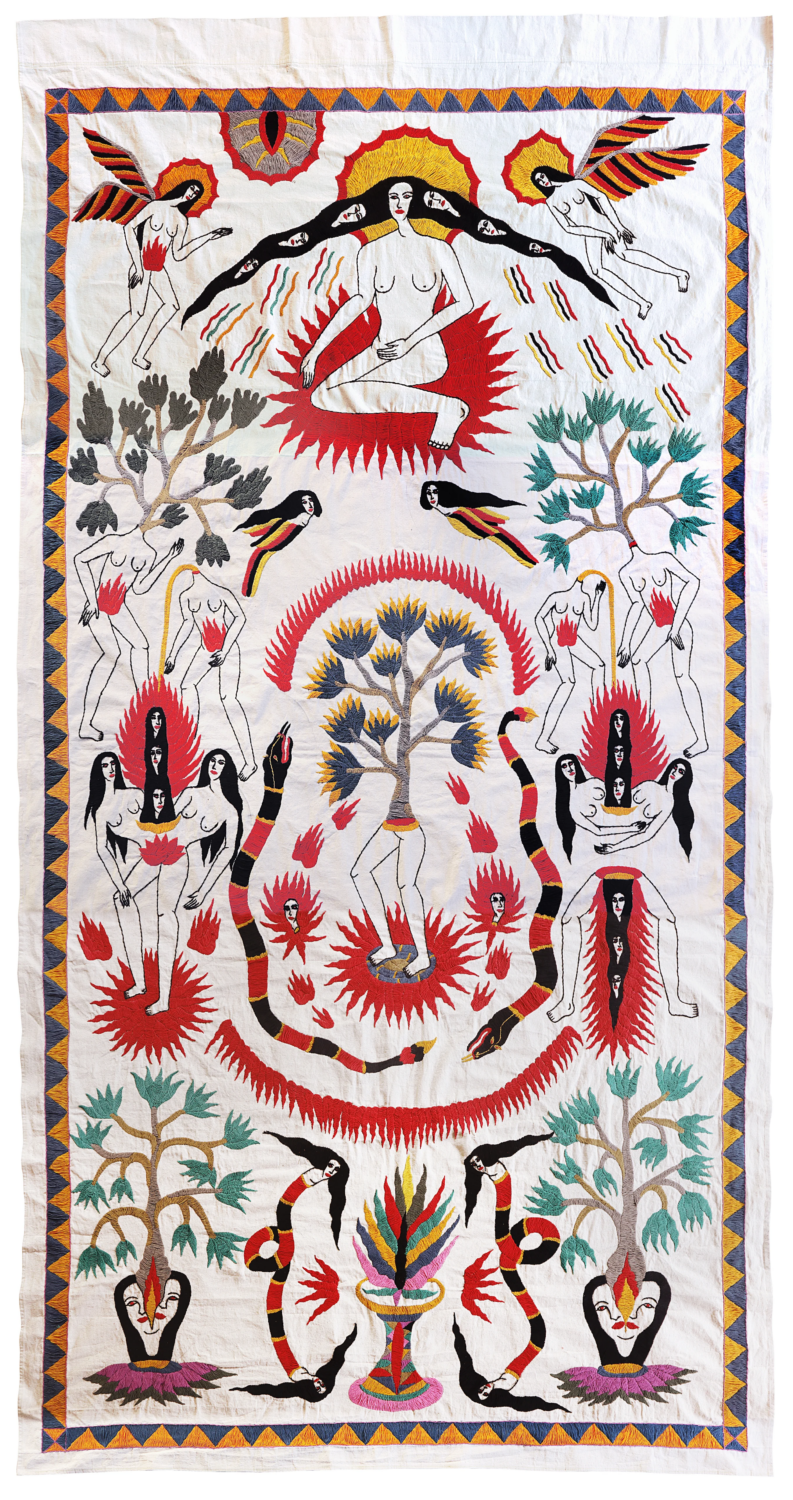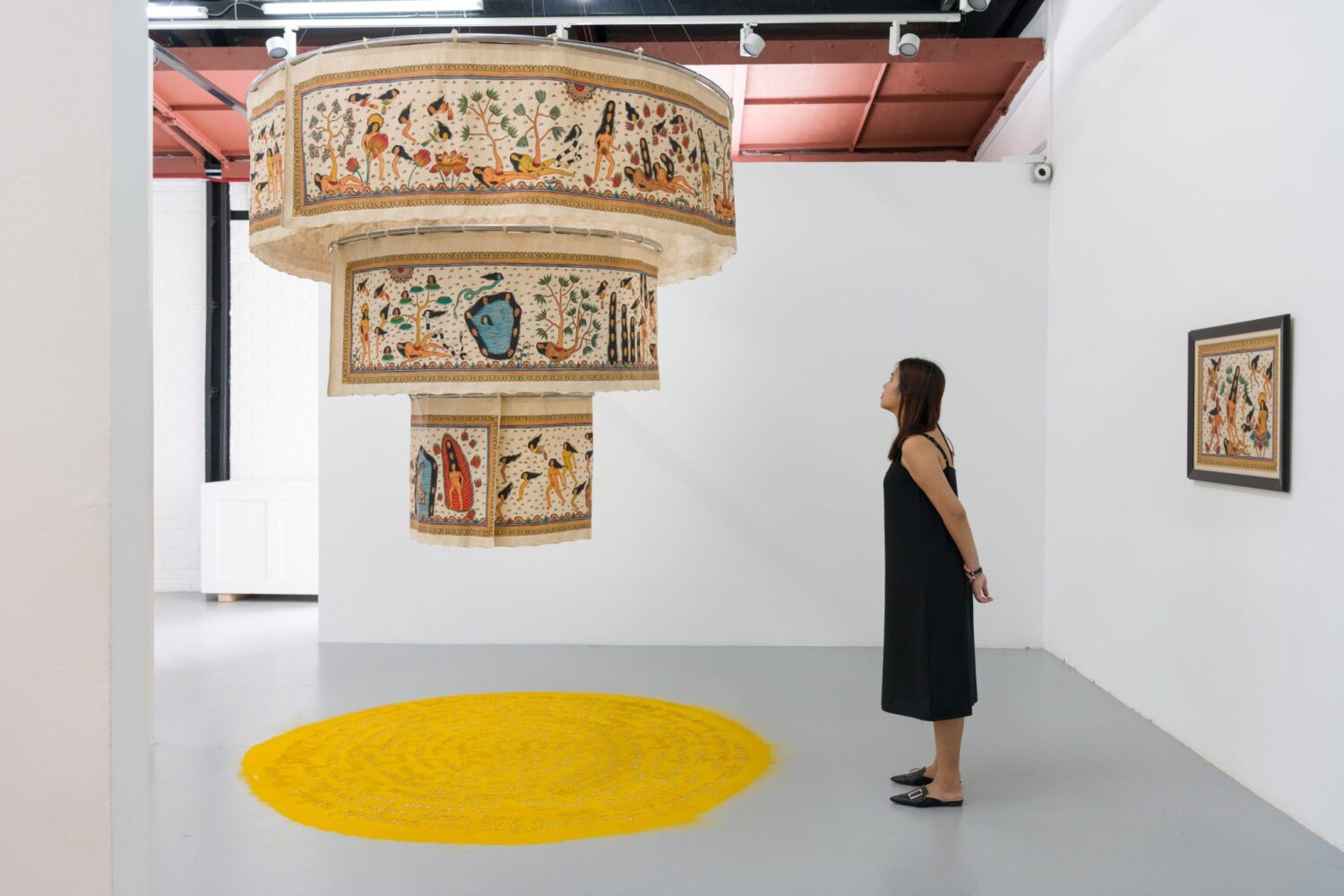The Sacred and the Feminist: In Conversation with Indonesian Artist Citra Sasmita
By Keshav AnandOn 30 January 2025, Indonesian artist Citra Sasmita will unveil her first solo exhibition in the UK, Into Eternal Land, at The Curve, Barbican. Bringing together diverse media—from embroidery to scent—Sasmita will transform the 90-metre-long gallery into a sprawling landscape that connects cultures, histories, and cosmologies. Building on her interdisciplinary practice, Into Eternal Land challenges traditional narratives surrounding gender, power, and coloniality, while honouring craft techniques and mythologies passed down through generations. At its heart, the exhibition envisions a post-patriarchal world, centring women as powerful agents of transformation and resistance. Ahead of the presentation’s opening, Something Curated’s Keshav Anand spoke with Sasmita.

Keshav Anand: What inspired the upcoming exhibition’s title, Into Eternal Land?
Citra Sasmita: The title is a culmination of my previous works that frequently explore themes of Eastern philosophy, mythology, and ancestral narratives and beliefs. Having been born and raised in Bali, I am well-acquainted with stories about karma, the journey after death, and the history of Dutch colonisation. I aim to portray these cosmological events through the dramatic installation titled Into Eternal Land.
KA: I’m curious if and how your background in physics and literature seep into your art practice?
CS: What I can convey regarding this question is that I love knowledge and various disciplines, and my interests are not limited to literary studies and physics. Visual art has been my passion since childhood. Discovering the arts after studying these two distinct fields made me realise that studying art involves more than just formal aesthetics; art also offers the freedom to explore other disciplines to find its true essence. You can see my background in literature reflected in how I construct narratives and cosmologies in my paintings, while my knowledge of physics is evident in how I formulate shapes and combine various elements in my work.
KA: Your work often features strong female protagonists who defy patriarchal norms. Could you expand on the thinking behind these characters?
CS: Making women the main characters reflects my political stance in reclaiming the interpretation of the canon and history, which has often overlooked the significant contributions and roles of women, especially in the visual arts. For a long time, I’ve pondered the question of the roots of patriarchy in Indonesia that has led to the social inequalities experienced by women from previous generations. This has driven me to explore the history and narratives that have been passed down. In several discoveries, such as in ancient paintings, women are often marginalised figures, which inspired me to position women as the primary and central characters in the narratives of my artwork.

KA: You reinterpret the Kamasan painting tradition, a historically male-dominated art form. How do you approach this technique to challenge its traditional narratives and expand its possibilities?
CS: I studied from my teacher, Mangku Muriati, for approximately six years. She is a priestess and maestro painter of Kamasan. My learning process is very organic and I am fully aware that there are technical standards and rules that I cannot learn because I am from outside the village. However, I started by studying the popular narratives they inherited, and how these narratives function in the socio-cultural society in Bali.
Kamasan painters really adhere to Wayang anatomy and cosmological composition in arranging the story on the canvas (for example, the divine figure must be placed at the top of the canvas so that it forms a hierarchy with the other figures), but I chose to paint the figure with human anatomy with its pure essence, without any clothing (clothing is a symbol that differentiates the social class of one character from another), so that what I present is considered not to imitate what they inherited, but rather a new contribution because it is considered to provide a new innovation.
KA: The Curve is an impressive and challenging space to work with. How did its architecture influence your creative process for this commission?
CS: When I was first invited by the curator Lotte Johnson to fill The Curve, I only viewed the space online and estimated its size from the floor plan. Of course, it wasn’t easy for me to face a space as large as The Curve, which is my biggest project this year, along with the experience I wanted to present there. However, the unique curved shape made me feel familiar with the sacred symbols that I inherited from Balinese culture, allowing me to enjoy the imaginative process of the artwork I would present there. I designed the piece “Into Eternal Land” and received full support from the curator before finally seeing The Curve in person.
The imagination that emerged was actually very closely related to the rituals and customs I perform in Bali, including discussing the complex socio-cultural situations, especially regarding women in a patriarchal culture, and, cosmologically, relating to the landscape, mythology, and beliefs passed down through generations. I envisioned a cyclical repetition, the concept of journey and reincarnation that integrates well with the flow and shape of The Curve’s space, which I believe symbolises that spiritual journey. In the end, I decided to design the dramaturgy in my work Into Eternal Land, as I revisited the history and narratives of my ancestors, as well as our philosophy that believes in the stages of life that must be traversed to achieve spiritual fulfilment.

KA: I understand the textiles in your exhibition are created in collaboration with women artisans in west Bali. Can you share more about this collaboration and its significance in preserving endangered craft techniques?
CS: Collaborating with the embroidery community in West Bali is an extension of the journey of the Timur Merah Project. This project originated in East Bali with Kamasan paintings, and the journey westward, with the discovery of products of Hindu-Islam cultural acculturation, also serves as an important code for understanding Bali’s history, not only cosmologically but also geopolitically in a more holistic manner. The branching ideas still strive to follow the current, yet critically aim to reveal that Bali will become an important discourse in addressing unresolved issues related to the legacies of Dutch colonialism. There is a socio-cultural structure that changed after the Dutch colonised Bali, which implicitly appears in my work.
In the exhibition Into Eternal Land, I am presenting embroidery works that are crafted exclusively by the community in Jembrana, West Bali. I began working on this series of embroidery in 2023 when I was invited by the Diriyah Biennale to research the first Muslim village in Bali, which has existed since the 16th century, located in the same area. Currently, I am still exploring the cultural relationship between Hinduism and Islam, which is integrated through cultural products such as weaving and embroidery, and how acculturation has taken place in West Bali—a coastal area with significant historical context as one of the ports that served as an international trade route at that time.
In their local terms, embroidery is referred to as “sulaman.” Before the embroidery process begins, there is a sketch artist responsible for creating the narrative on the fabric. This sketch is generally called “ortenan,” which likely derives from the word “ngorte,” meaning “to narrate and tell stories.” The next step is called “sudutan,” which involves framing the sketch using thread after it has been anchored onto a rectangular wooden frame, serving as a support for the embroidery.
They skilfully create the front side to appear full, while only small stitches are visible on the back, following the outline of the sketch. This is because they use a cross-stitch technique on the front only, allowing them to conserve thread (which is scarce in West Bali). I am particularly interested in showcasing this contradiction, as the audience can still observe how the memory of “ortenan” is present on the back of the canvas. In the craft-making process, especially in the context of decoration for rituals, it is essential for the artisans to leave traces of their work so that it can be easily learned by future generations. This knowledge is not widely documented but is instead shared through hands-on practice and oral traditions.

KA: Are you able to share any information about what you’re working on for Sharjah Biennial 16?
CS: The work I will present at the Sharjah Biennial 2025 is entitled Timur Merah Project XV: Poetry of the Sea, Vow of the Sun. This installation consists of variable dimensions, combining weaving that I design from iconography that I usually paint, embroidery, beadwork, Kamasan paintings, a 2-channel video about poetry manuscripts written by the Queen of Klungkung Ida I Dewa Agung Istrin Kanya, and antique artefacts which reflect how important and historical objects were looted by the Dutch colonialists when the Balinese people were at war with the Dutch. This work is a commemoration of Balinese history and war crimes and resistance to the colonial system inherited in Bali.
KA: Changing pace for a moment, aside from home, where are your favourite places to eat in Bali?
CS: My favourite food place in Bali is Warung Be Pasih, a seafood restaurant located on the Matahari Terbit Beach harbour. This harbour connects neighbouring islands such as Nusa Penida Island, Lombok Island and Nusa Lembongan Island.
KA: What are you currently reading?
CS: I am currently compiling a poetry book entitled Book of Fire. I wrote this poem in the 2017-2018 period and the book will be published this year. I really like the book A Season in Hell written by Arthur Rimbaud.
Citra Sasmita: Into Eternal Land is on view from 30 January to 21 April 2025 at The Curve, Barbican.
Feature image: Citra Sasmita, Into Eternal Land Citra Sasmita, Act One, (detail) 2024, from Into Eternal Land, The Curve, Barbican, 2025. Courtesy Citra Sasmita